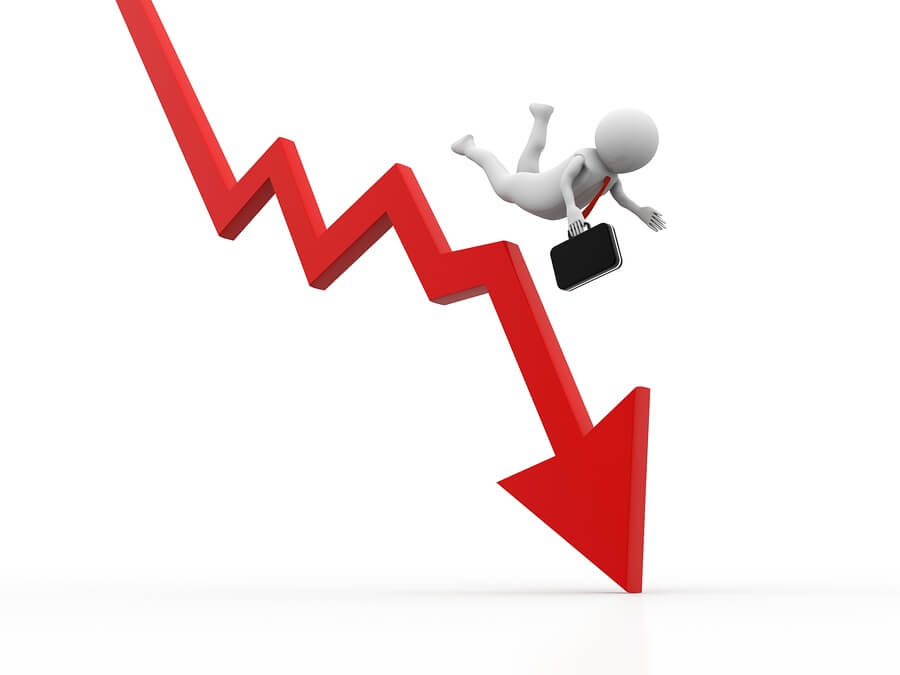Almost every new affiliate marketer begins with a negative ROI. It’s natural to have campaigns running at a loss for a while but not for a long time. How do we reverse negative ROI after a while?
Affiliate marketing has ups and downs. No matter how experienced you may be and how much you’ve learned to optimize campaigns, at some point, your ROI will fall flat, and you’ll have to do anything to get it back.
So, to help you out, I decided to share these tips and tricks on how to combat negative ROI and get your campaigns back on a profitable road.
What is Negative ROI?
Negative ROI occurs when the ad budget is greater than the benefit from ad conversions.

Assuming you’re running a campaign, the traffic comes from a wide variety of sources. There are several smaller positions under each source, e.g., targets, each giving you a small portion of the traffic.
Not every target, placement, or source will fit your offer. Some of them are going to be so uneven that they won’t bring even one single conversion. Some will convert well, but only on higher-priced placements (higher bids). Some are going to do well right from the start.
While it’s nice to test as many traffic sources as you can when you first start, as soon as you have some critical data and your ROI is continuously red, it’s time to do something about it.
Start a whitelist campaign
The first way to counter negative ROI is to use whitelists. You have three potential choices.

1. Create a whitelist of your own
Look at the data and identify the best placements to convert and create a new whitelist campaign with only specific traffic segments. You can easily do it using the Scaleo affiliate marketing software.
Related: Looking for open source affiliate software?
You may also create a narrower campaign, but bear in mind that unless you can find a high number of well-performing sites (targets), you can end up getting very little traffic.
2. Using the suggested whitelist
If you don’t have sufficient data or if the data you have isn’t significant enough, you can always ask the traffic source support team for a whitelist for your campaign. It would help if you told them:
- the vertical
- ad format of your campaign
- what whitelist do you need for the GEO location?
3. Mix both
For the most significant amount of well-tailored traffic, you can make use of your own findings along with traffic source recommendations. That way, you can generate as much traffic as possible from a placement that has been proven to work with your unique offer.
Optimize landing pages and images

Assuming you’re split-checking a variety of landing pages and creatives (as you should be), their optimization should be the next move in the battle against negative ROI.
Just as you want to collect data by trying as many traffic sources as you can, you’re going to want to refine your campaigns by cutting off any pieces of your campaign that didn’t succeed, for example – visuals.
Negative ROI can easily be triggered by a lot of people clicking on your ads because they’re interested in what they are promised and then leaving the funnel because of a bad landing page or pricing page that doesn’t meet their expectations.

So to make sure you’re just using the best display ads and landing pages, you can look at the data you’ve accumulated and get rid of the underperformers.
You can do this by simply looking at the ROI, investing in each ad, and deciding for yourself which ones are worth keeping on board.
Alternatively, you can enter the number of impressions and the number of conversions to this Bayesian A/B Test Calculator and let it tell you which creatives have the greatest chance of success.
Read also: Optimization Calculator for Affiliate Marketing Campaigns
So, once you identify the winners and reject the losers, you can continue the split test by slightly changing the winning asset.
Using rules for auto-optimization
It’s common to end up with a negative ROI when you have a ton of campaigns running concurrently, and you have to keep an eye on each of them individually.
That’s why using auto-optimization features can be a life-saving and money-saving solution.
TIP: Scaleo has a built optimization tool that allows you to set fixed rules, and then our AI-powered algorithm will automatically optimize your campaigns for you.

Possible optimizations involve stopping traffic based on GEO location. This gives you a lot of choices to monitor the flow of your visitors.
Related posts:
Other factors affecting ROI
In addition, negative ROIs can occur due to changes in affiliate networks’ payouts. As we know, due to the coronavirus crisis, even Amazon lowered its commissions, so even if you have had a perfectly optimized campaign, you will start losing money simply because your earnings dropped. Setting up auto-optimization rules means that you don’t lose money because of factors you can’t manage.

Rule-based optimization is a fantastic technique to ensure that the campaigns are always tracked by an algorithm that doesn’t think twice about stopping underperformers.
People may be biased; machines aren’t. You may be hesitant to pause the under-performing source because you have had a lot of success while running a slightly different campaign. But if the data clearly indicates that this time it doesn’t work, you’re not supposed to wait until you lose money. You’re just supposed to pause it and continue working on optimization.
Don’t overpay for your traffic.
Overpaying for visitors or traffic is not a very common phenomenon for inexperienced affiliates since they typically have tight budgets and aim to make it work by investing as little money as possible.

However, no matter the experience you really have, you need to keep an eye on your win ratio.
This “win ratio” tells you what percentage of your bids win the bidding auction. It’s pretty much asking you whether you’re paying enough for traffic.
The right win ratio is between 70% and 90%. Only when you get to that point will you be confident that you have completely checked the source’s ability. If your bid matches well, steadily increasing the win ratio to the recommended number will likely earn you profits.
However, what if your win ratio is higher than that and you’re already far into negative ROI?
Different sources have different traffic volumes and need different bids to unlock profitable leads. Although some sources will have low ROI at first and then become profitable as bids increase, some sources may start with a relatively high win ratio, high spending, and slightly negative ROI.
In these rare cases, you can slowly try to reduce your bids. That way, you’re more likely to keep buying the same placements, but at a lower price. If you spend less and get about the same amount of conversions, your ROI will slip seamlessly into green numbers again.
Look for offers with slightly higher payouts.
Having an offer with a higher payout may seem like a bad idea to fight against a negative ROI, but bear with me, and I’ll tell you why it makes sense.
I am not asking you to change the deal and start from scratch totally. I am saying you should check for a particular deal you’re already running on other affiliate networks. Oftentimes, many networks have the same deals/products, but you have a fair chance of finding the deal with a slightly higher payout because they all charge a different margin.
That way, because you already have data on what works well for that campaign, you’re going to be able to maximize your payout gains while maintaining your costs. If your offer were close to breaking, the extra boost of money would certainly drive it into green numbers.
Another way to get higher payouts is simply by asking the network representative if that’s feasible. If you have been working with them for a while and have no problems with poor quality traffic or fraud clicks, your account manager will check to see if it is possible to increase your payout. After all, if you are a good affiliate, it’s in their best interest.
Payout bumps are certainly probable for those of us with a strong record of providing quality leads. You don’t need to be a super-affiliate to ask for a payout increase. Of course, they’re not always possible for a number of reasons, but it won’t hurt to ask.
Cut fearlessly
Finally, when checking large-volume GEOs, negative ROIs can be triggered by several misplacements, e.g., sources and targets, sending traffic to you.
Obviously, this is all really natural, and there is no other way to assess high-volume GEOs. But although cutting vigorously might not be the best choice for smaller-scale campaigns, coping with massive volumes cries for assertiveness.
Don’t let yourself be drowned in low-quality traffic. Set rule-based optimization that eliminates sources or goals if they do not become efficient after spending up to 2-3 times the payout. If you get thousands of impressions or clicks every hour, you can allow yourself to be tough.
You have to keep in mind, though, that the more aggressive you are with cutting and stopping the traffic outlets, the fewer visitors you get. This approach works primarily for large campaigns with medium to high budgets. If you use this strategy on smaller GEOs, you might find yourself with too little traffic to make the campaign worth running.
Conclusion
Negative ROI is nothing to be afraid of. Trying something new in affiliate marketing almost always results in losses. But if you have to lose some money to gain more in the future, that’s not really a loss. This is an investment in your future business.
If you find that you are running a campaign at a loss for a little too long, I hope this article has given you a lot of ideas on how to fix the problem. Now that you are no longer afraid of a negative ROI, it’s time to get back to managing and optimizing your campaigns!
Last Updated on June 20, 2022





